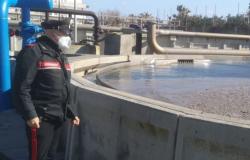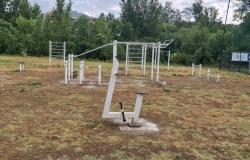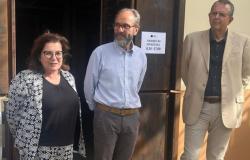As per now consolidated tradition, last Thursday 31 May, the Novara Jazz Festival kicked off the two long weekends of music that comprise it and did so, curiously, with photography. An inseparable union between photography and jazz, as has been said many times, a bond different from that with any other musical form. “Jazz musicians don’t move much on the scene,” Emanuele Meschini, who has been the Festival’s official photographic reporter for years, told me. jazz musicians give the photographer time to wait for what actually happens to happen: a movement, an expression, a disharmony, “which, when you like it, makes the photo turn out better”. Nj’s guest today is Carlo Verri, one of the great Italian photographers who has always supported jazz. In Novara, in the Sala dell’Accademia of the Broletto monumental complex, he presents the exhibition “I took jazz by the tail” with photographic portraiture dedicated to musicians such as Randy Weston, Ella Fitzgerald, Max Roach, Lester Bowie, Chick Corea, Bobby Watson, Ahmad Jamal, Ornette Coleman, Ray Brown and many others. Before the vernissage there is time to present another magnificent editorial work of his, “Sounding Pictures” edited by Marco Pinnisi, with shots that have become famous and collected in this curious volume in the shape and size of an LP. A nice opportunity to meet other photographers of the “Lombard school” who have made visible the (now long) history of Novara Jazz such as Luciano Rossetti. The exhibition inaugurated on Friday will remain open for the entire duration of the Festival. In the afternoon we watched, from this evening we listen with the “jam session” of the Dedalo school in Nòva and tomorrow we go to the Novara hills…
Who knows why research or contemporary music seeks ancient environments, while classical music does not prefer the modern. It is with this Hamlet-like thought that I await the start of the very refined concert (as it will turn out to be) by “Tellkurjia” (Ambra Chiara Michelangeli on viola and electronic effects, Stefano Calderano and Francesco Diodati on electric guitar and Francesco Guerri on cello), at interior of the magnificent Ethnographic Museum of the Antonelliana Villa Caccia in Romagnano Sesia, a few kilometers from Novara. Crawling over hills and bumps in the wine lands always leads to precious discoveries like this. A quartet that would like to be made of strings but, almost out of repentance or provocation, ends up becoming something else, with two guitars instead of violins. A dull beginning, with strumming and small adjustments of the instruments which seem, to the less knowledgeable public, to be simple tunings of the instruments, suggests a refined minimalism which instead, little by little, transforms into a column of full-bodied sounds, sometimes even imperious, who make their own the lessons of Free Jazz as well as electronics and, naturally, classical music. Twentieth-century and lunar anxieties in the music of “Tellkujia”, almost never the comfort of a melody and, also for this reason, impossible to reduce the concentration and energetic tension that fills the room of the ancient and fascinating building. A precious and dry concert, without the concession of an encore and perhaps a few words on the musical choices or the name of the quartet, which would not have been spoiled at all.
For the third day the Novara Festival offers two “out of town” outings. The first in the solemn Villa Picchetta di Cameri a few kilometers from Novara. With three “solo” concerts by Vincent Courtois (cello), Jacopo Ferrazza (double bass) and Louis Sclavis (clarinets). Here, when Vincent Courtois begins to play his cello, the sun is high in the sky and it is the hour in which the sounds of nature seem to fall silent and the audience, extremely heterogeneous, seems to sense that, in concerts like this, every stirring of a leaf inevitably disturbs the magic of sound. The instrument is there, waiting to be caressed, vibrated and struck. Yes, you know what “solo” concerts are like in evocative places and with high-class musicians: you literally know where you are starting, but you don’t know where you will arrive. In fact, perhaps we don’t even know where we’re starting from, but the silence of waiting is already an integral part of the concert. When the first pizzicato and the first string of the instrument begin to vibrate, the magic is already accomplished. The sound, from the intimacy of research to almost blues sounds, takes over the space in front of the villa, which is no longer a garden and is not yet architecture: Vincent Cortois in his compact concert seems to include stylistic elements that come from different musical worlds. In this regard, one cannot help but remember another memorable concert by an equally great cellist, Hank Roberts, proposed by Novara Jazz Festival a few years ago. The second concert involves the transfer of the public from the garden space in front of the Villa, to the so-called “Music Hall”, an octagonal building, originally intended to host concerts. Here, it is Jacopo Ferrazza’s turn who, with his poem on the double bass, keeps the large audience riveted to their seats (or to the floor). A long, dry, tight and compact composition without too many concessions to the bizarre, but made of solid, decisive sounds and large movements of the bow, much appreciated by the public. Finally, we move to the park of the villa which slopes down onto the fields and moorland, and here is a sacred monster of French jazz, namely Louis Sclavis, with his clarinets, in the shade of a plant, who begins the concert with a “Bienvenue dans mon jardin” and, it must be said, that the rural location gives the screeching of Sclavis’ clarinet a certain “disorientation” since, unlike the strings, the winds do not seem to be in tune with the natural environment (and on this it would be necessary to study in depth the question, assuming someone hasn’t already done so). But it takes little for Sclavis’ “lucid madness” to change the paradigm and transform the almost mystical atmosphere of the first two “solo” concerts into a saraband of cheerful and strident, vital and sinuous sounds.
The second day of the first Novara Jazz weekend ends at the Cavagliano Castle, a small jewel whose construction dates back to the 12th century, which stands on a gentle hill overlooking the body of water of the surrounding rice fields. In the small but very fascinating hall here is the concert of the “Federica Michisanti Quartet” in which, the two French musicians already heard are joined by the drums, percussions and electronic effects of Michele Rabbia, a great experimenter and advocate of a prepared drum set, to which a myriad of electronic objects and variations come together. Federica Michisanti is “proven proof” that Patrick Süskind was wrong. Let’s just remember, for those who haven’t read it, that Süskind is the author of a novel entitled “The double bass” (1980), from which the solitude of the double bass player in the context of an orchestra emerges. Here exactly the opposite happens, the pivot of the scene is Federica and her cumbersome instrument. It is he who dictates the times and methods of a concert which presents the songs from the quartet’s latest album, “Afternoons”, seven pieces full of a great frenzy of compositions where, on pre-established harmonies, improvisation plays an important role, dictated always with the double bass as the pivot of all the compositions. An afternoon without light in this strange spring illuminated however by the light of the Quartet’s music.
After all, it is the composer herself in an interview with “Musica Jazz” who talks about afternoons “…pervaded by that special light which, like a second dawn, brings the promise of still having many possibilities before the day ends…”





